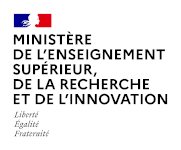Audiovisual research data
A guide to managing digital media for anyone using it as an integral part of carrying out research.
Introduction
Digital audiovisual material is an important form of research data. It is raw material for observational and experimental analysis, for practice-based learning, and research communication.
…
Digital media is technically complex and physically vulnerable to loss, as well as risks of the media or file type being made obsolescent. Even when video content is converted to digital on a hard disk, new weaknesses can emerge, such as inadequate visual information to allow analysis.
Curation of media research data should be a team effort, bringing together researchers, data or information managers and media technology specialists. Research projects making substantial use of media may find that different communities want to access and use the data throughout and beyond the project.
A particular challenge is managing the material’s transition throughout its life as research data: at first managed by the individual researchers who create or collect it, followed by collaborative use. Parts may be made available online, and possibly annotated, commented on or downloaded and re-edited by others.
Publishing media collections is best led by the researchers who created them. They will benefit from coordinated support from institutional and national data repositories in such key areas as storage management, format migration/ transcoding, metadata implementation, ethics and IPR.
Who is this for?
This guide is applicable across disciplinary boundaries, for anyone using digital media as an integral part of carrying out research.
…






